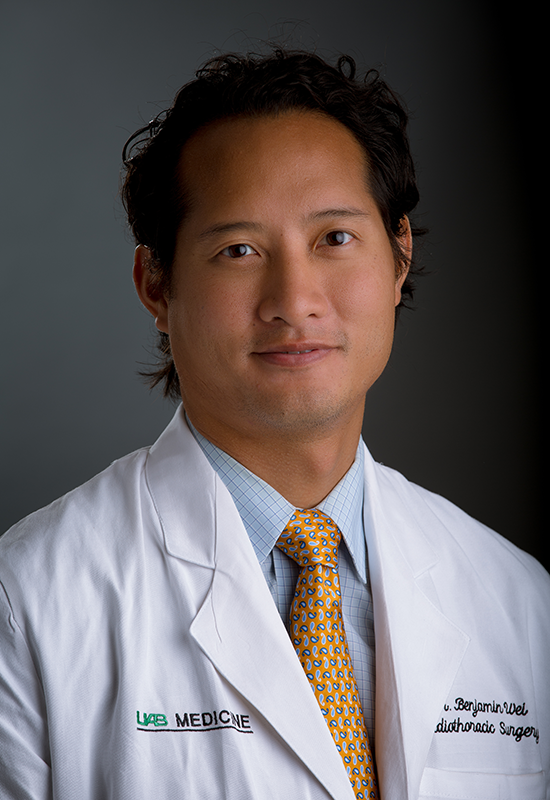 Benjamin Wei, M.D.
Benjamin Wei, M.D.
Surgeons at the University of Alabama at Birmingham are offering a new robotic surgery option for patients with a paralyzed diaphragm. UAB Hospital is one of the only hospitals in the region offering this new procedure to its patients.
The diaphragm is a muscle that separates the chest and abdominal cavities and is the primary muscle that facilitates breathing. It is controlled by the phrenic nerve attached to the area of the spinal cord around the neck. A paralyzed diaphragm is often caused by an injury to the phrenic nerve. This leads to difficulty breathing as the lungs are unable to inhale and exhale air as efficiently.
The new procedure known as robotic diaphragmatic plication involves repositioning and/or reshaping the diaphragm to eliminate excess or floppy diaphragm muscle that occurs when the diaphragm is paralyzed. Traditionally, this operation was performed through an open procedure, but the new robotic technique is minimally invasive and allows for a quicker recovery time.
“With this condition, the diaphragm stretches and weakens,” said Benjamin Wei, M.D., an associate professor in the UAB Marnix E. Heersink School of Medicine Department of Surgery and program director of the Cardiothoracic Surgery Residency. “By making the diaphragm flatter, patients usually feel better, with improvement in shortness of breath and exercise capacity.”
Wei says robotic plication is advantageous because it is relatively simple and effective.
“Patients go home usually on the day of the procedure, and it can be done in a minimally invasive way either through the chest or through the abdomen,” Wei said.
Wei says patients with a symptomatic paralyzed hemidiaphragm often have a difficult time finding a practitioner familiar with this condition. He is looking forward to helping patients with this condition through this new procedure.
“We are very excited to be able to bring this treatment option to our patients,” Wei said. “We have already been able to help many of our patients breathe and live better, and we are looking forward to helping many more with this condition.”